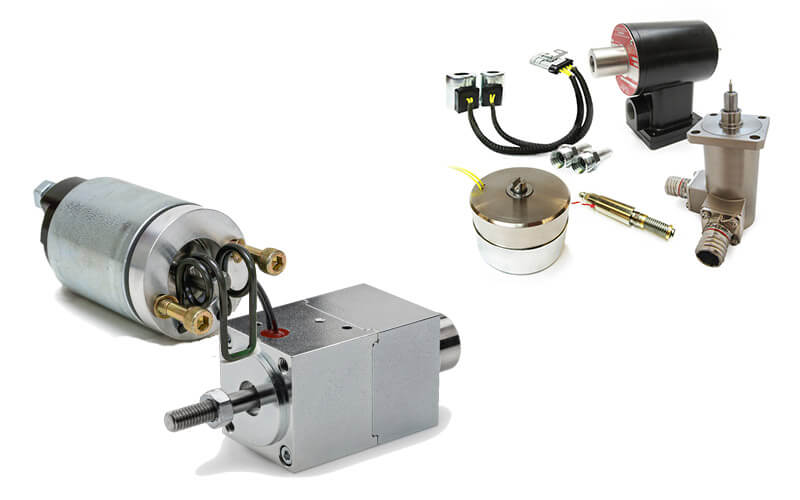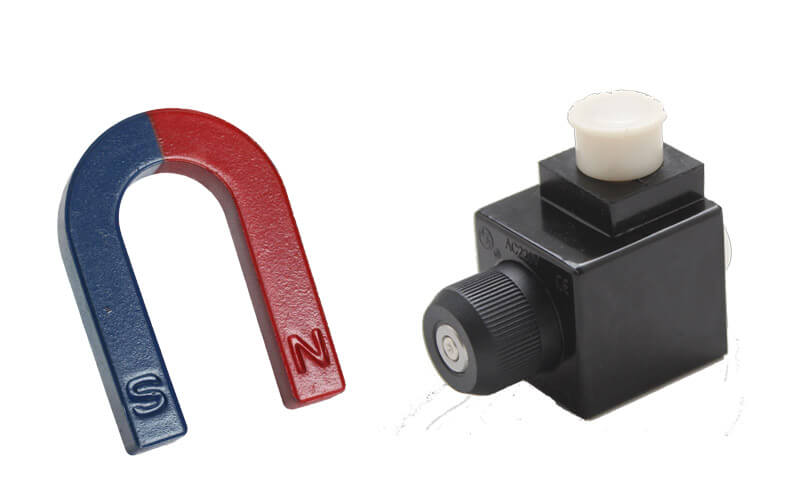Both of solenoid and magnet are devices with magnetic force. But what’s the difference between solenoid and magnet? In the following article, we will show you a basic analysis between solenoids and magnets.
Introduction of Magnets
Magnet, aka permanent magnet, is a type of lodestone that can absorb iron materials. This type of adsorption can last for such a long time and without clearance. If you want to separate the magnet and iron materials, it needs an intervention by the outside force. There are many different types of magnet materials, such as NdFeB(neodymium iron boron), ferrite, alnico, samarium cobalt, iron carbon cobalt, etc. Among all the magnet materials, neodymium iron boron has the strongest magnetic property, that has been called as strong magnets. Normally, if a magnet that requires strong magnetic property, neodymium iron boron is the prior choice.
Introduction of Solenoids
A solenoid is a type of electromagnet device that consists of the solenoid coil, solenoid tube assembly (with plunger in it). It is also a type of magnet, but unlike the permanent magnet, solenoid is a type of non-permanent magnet, it will gain magnetism under some certain conditions. When the solenoid coil has been electrified, the solenoid gains magnetism as magnets. Normally, the solenoid plunger is made of soft iron or silicon steel, as these materials are easy to be magnetized and demagnetized. Therefore, solenoids will be magnetized when it has been electrified, and when the power cuts off, the magnetic disappears.
The iron plunger is inserted in the solenoid tube assembly, after the solenoid coil has been electrified, the solenoid plunger has been magnetized. The magnetized plunger becomes a magnet, therefore, the magnetism of solenoid coil enhanced as there are two magnetic fields aliased with each other. Moreover, solenoid plunger is made of soft iron, not steel. The main advantage of solenoid is that it is magnetized as the power is on, and will lose the magnetism right after the power has been cut off. Although steel can be magnetized, it will hold the magnetism for quite a long time. So we can not control the strength of the magnetism of solenoids through the size of current.

Differences Between Solenoid And Magnet
Both solenoid and magnet are magnetic, the main difference is that solenoids is the magnet that needs electricity to trigger its magnetism. As we have learned in physic class, when we wire enough copper wires around an iron nail, there is a magnetic field after the copper wire is electrified, and the iron materials nearby will be absorbed on the iron nail. As the strength of solenoid magnetic can be controlled by the size of current, solenoids have been widely applied in industrial areas. In industrial area, many equipment needs a certain push force or pull force to trigger it, so solenoids is a perfect actuate device for industrial equipment.
When the solenoid has been electrified, the nature of solenoid and magnet are the same. But the magnetic pole of solenoid can be changed, it is determined by the positive and negative of electricity and the wiring direction of solenoid coil. Also, the magnetic property of solenoid is changeable, it will gain magnetic property when it has been electrified. Last but not least, the strength of solenoid magnetic force is also changeable, it is related to the numbers of wraps of solenoid coil and the strength of current. But the strength of permanent magnets is unchangeable.

Application of Solenoids
With the development of solenoids, it has been applied in almost everywhere, such as the automatic doors, the ATM of banks, the cash register in supermarkets, the punch-clocks for work, even the oiling machine in petrol stations. These are the machines we are using every day that adopts solenoids, also there are some other equipments that use solenoids that we are not so familiar with but still closely related to our life, such as the computerized flat knitting machine, hosiery machine, public parking facilities, game machine, etc.
Above is just a small part of solenoid application range. With the development of solenoid technology, there are many different types of solenoids used for different type of machines. To classify solenoid types, there are many different dimensions. For example, it can be divided as DC solenoid and AC solenoid based on different voltages. And based on different solenoid operating modes, it can be classified as the pull-type solenoid, push type solenoid, holding solenoid, rotary solenoid. Also, it can be divided into hydraulic solenoid and pneumatic solenoid, as the different types of systems that used solenoid as an actuator.
Despite the differences between solenoid and magnet, there is also integrated application of solenoid and magnet, such as the holding solenoid.

